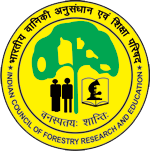Forest fires are a devastating natural disaster that can cause widespread damage to forests, wildlife, and human communities. In the aftermath of a wildfire, it is crucial to implement a comprehensive restoration and rehabilitation strategy to restore the affected area and promote long-term recovery.
The Importance of Post-Fire Restoration
Post-fire restoration is essential for several reasons:
- Prevents erosion and sedimentation: Wildfires can leave the soil bare and vulnerable to erosion. This can lead to sedimentation in waterways, which can harm aquatic ecosystems and infrastructure.
- Protects water quality: Wildfires can also contaminate water sources with ash, debris, and chemicals. Restoring vegetation helps to filter pollutants and protect water quality.
- Reestablishes habitats: Wildfires can destroy habitats for wildlife, including plants, animals, and insects. Restoration efforts can help to reestablish these habitats and support the recovery of wildlife populations.
- Reduces wildfire risk: Healthy forests are more resilient to wildfires. Restoration can help to reduce the risk of future fires by improving forest health and reducing the amount of flammable material.
Post-Fire Restoration Strategies
There are a number of different post-fire restoration strategies that can be used depending on the specific needs of the affected area. Some common strategies include:
- Natural regeneration: This involves allowing the forest to recover naturally without human intervention. This is often the most cost-effective and sustainable approach, but it can take many years for the forest to fully recover.
- Assisted natural regeneration: This involves helping the forest to recover more quickly by providing some assistance, such as planting seedlings or controlling invasive species.
- Active restoration: This involves more intensive intervention, such as planting trees, shrubs, and grasses. This approach is often used in areas where natural regeneration is not possible or where the forest needs to be restored more quickly.
Rehabilitation of Fire-Affected Communities
In addition to restoring the natural environment, it is also important to rehabilitate fire-affected communities. This may involve providing financial assistance, rebuilding homes and infrastructure, and providing mental health support.
Long-Term Monitoring
Post-fire restoration is an ongoing process that requires long-term monitoring and evaluation. This is necessary to ensure that the restoration efforts are successful and that the forest is recovering as expected.
Community Engagement
Community engagement is an essential part of post-fire restoration. Local communities can provide valuable input into the restoration process and can help to ensure that the restoration efforts meet the needs of the community.
Post-fire restoration is a complex and challenging task, but it is essential for the long-term health of forests and fire-affected communities. By implementing a comprehensive restoration strategy, we can help to restore these areas and promote long-term recovery.



